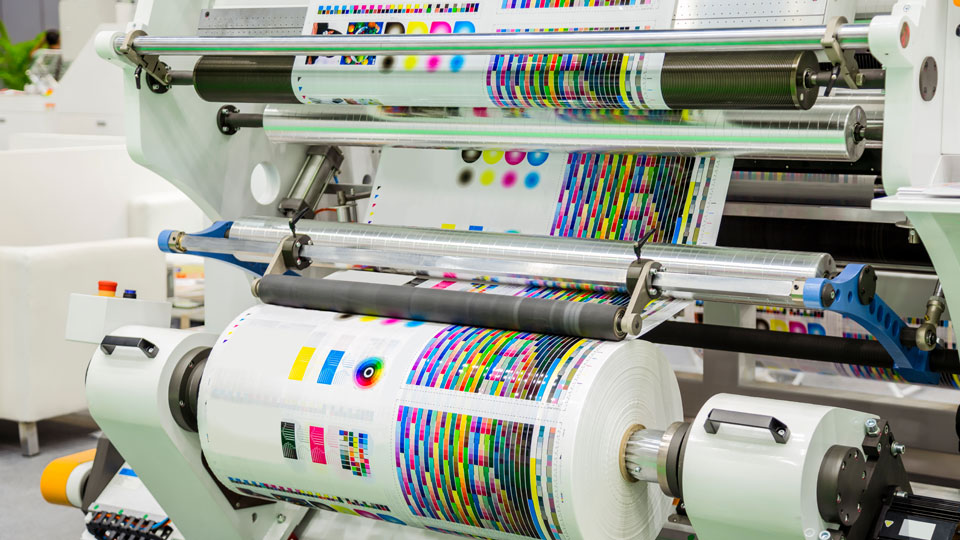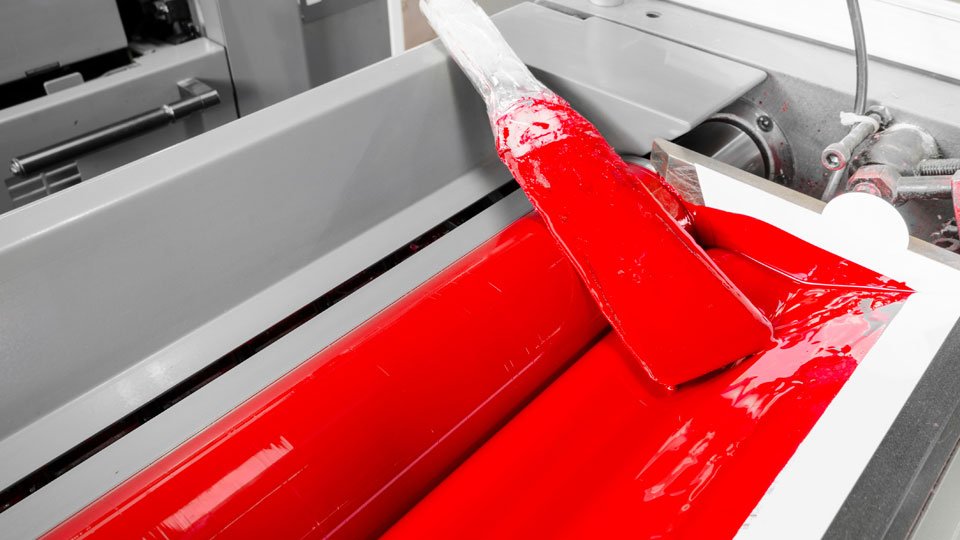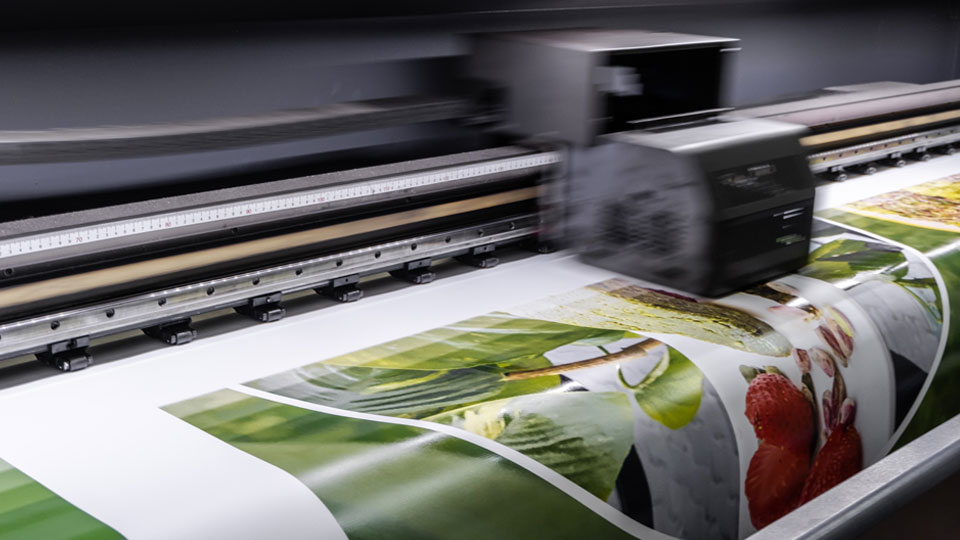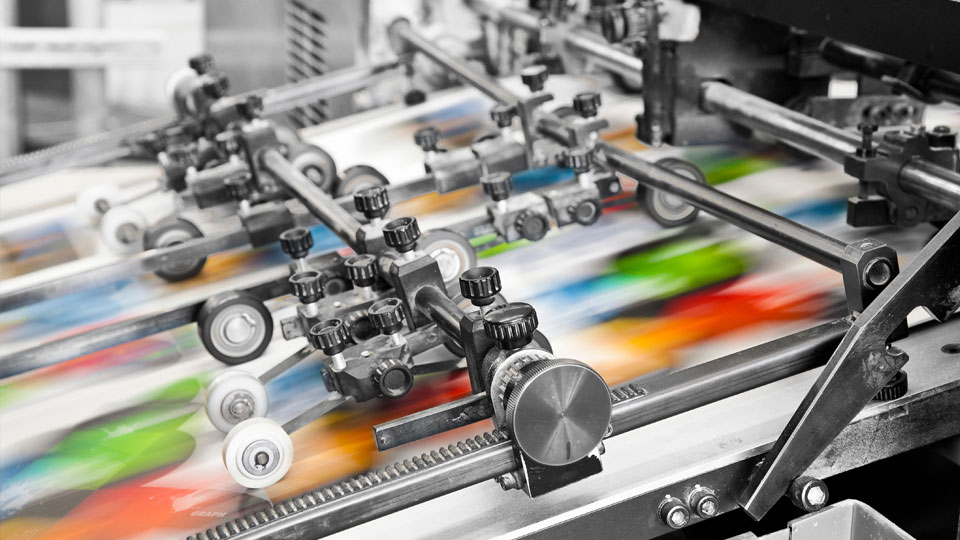
Precision in every print
A tangible, high-quality mail pack can set your direct mail campaign apart. Offset printing delivers the signature precision and professional look that's synonymous with high-end printed materials. Be it flyers, brochures, or other print collaterals, offset’s touch elevates their feel and aesthetic.
Active Mail's offset printing services come backed by the latest and best technologies, combined with decades of practical expertise. As your trusted partner for pristine print solutions, we'll elevate your brand messaging to capture attention and leave a lasting impression.
What is offset printing?

Offset printing, also called offset lithography, is a time-tested printing method that involves transferring an inked image from a printing plate to a rubber blanket, and then onto the final printing surface. The name "offset" comes from the fact that the ink isn't directly pressed onto the paper.
The modern offset printing technique was developed around the turn of the 20th century and quickly took over the commercial printing landscape. Even today, it remains the most widely used of all printing methods. Known for its sharp, clear images and type, offset is ideal for producing high quality prints at scale without suffering any quality loss over large runs.
How offset printing works
Offset printing is a sophisticated method that starts with the creation of metal plates, each corresponding to a different colour - typically cyan, magenta, yellow, and black (CMYK), but can also include metallic or fluorescent inks and Pantone colours. These plates are designed to hold ink in the areas that need to be printed and repel it in the non-printing regions.
Once the plates are crafted, they're loaded onto an offset press, where each plate is mounted on its plate cylinder. As the press operates, ink is applied to these plates. The plate then transfers the ink to a rubber blanket on the blanket cylinder. The image on the blanket, now carrying the ink, presses onto the paper or other substrates, imprinting the design.
Offset presses come in two major configurations, sheet fed presses and web presses. Sheet fed presses print on individual sheets of paper, which are then cut down to size, while web presses use large rolls of paper, making them ideal for longer print runs. In either case, the capacity of offset presses to employ unique inks and transfer ink with unparalleled precision, ensures vibrant, consistent results across vast quantities.

Digital vs. offset printing: making the right choice
Digital and offset printing are the two dominant methods used in print production, each with advantages and disadvantages. When making the decision between offset and digital printing, it's paramount to keep in mind what you want to achieve with your print marketing strategy. Having worked on and successfully delivered thousands of campaigns, we can help you make the choice between digital vs. offset printing that best aligns with your campaign's goals and budget.
Digital Printing

Advantages of Digital Printing
-
Quick Turnaround: No need for plates means faster setup and quicker delivery times.
-
Cost-Effective for Short Runs: Ideal for limited print runs due to the lack of setup costs.
-
Customization: Easily modify and personalize each print, making it perfect for variable data printing.
-
Less Waste: Because there's no need for plate creation or test prints, there's less initial waste.
-
Versatility: Capable of printing on a wide range of materials, from paper to cloth to ceramics.
Digital printing outputs via inkjet or laser printers directly from digital files. It can produce high quality prints almost on par with offset printing, and with almost as much consistency. While the variety of printing materials is slightly limited, some stocks may be better suited for digital than offset. Digital is especially effective when each printed piece requires a unique name, address, code, or other variable data printing customisation.
As it doesn't use printing plates, there's much less in the way of setup costs. A digital print run is quick to set up and execute, making it ideal for limited batches. However, costs tend to accumulate faster in larger runs, so depending on the size of your project, offset printing may be more cost-effective.
Disadvantages of Digital Printing
-
Limited Consistency on Large Volumes: Slight variations might appear in longer print runs.
-
Cost Inefficiencies for Large Runs: Per-page costs remain consistent, making large runs potentially more expensive than offset.
-
Narrower Color Gamut: Digital might not match the color range or special inks available in offset.
-
Lower Resolution: Though often not discernible to the average observer, digital can have a slightly lower resolution than offset.
-
Material Limitations: Certain finishes or thicker stocks preferred in high-end projects might not be compatible with all digital printers.
Offset Printing
Offset printing thrives when it comes to large volume print jobs. This printing method offers unmatched consistency in print quality, especially over extensive runs. While its setup might be more time-consuming and costlier than digital, its per-unit cost decreases as the print quantity increases, making it more cost-effective for bulk orders.
While digital printing has its merits, the depth and quality of offset lithographic printing is in its own league. Digital methods use electrostatic rollers to apply toner, while offset printing employs liquid ink, resulting in sharper, more vibrant images.
When precision, uniformity, and a professional touch are paramount, offset printing stands out as the preferred choice.
Advantages of Offset Printing
-
Printing Quality: Offset printing offers consistency, ensuring every piece - from the first to the thousandth - maintains the same high-quality appearance.
-
Efficiency in Volume: When your campaign demands large volumes, offset is not only cost-effective but ensures a uniform output.
-
Flexibility: From different paper types and finishes to custom inks, offset lithography provides options that other printing techniques might limit.
-
Incorporating Innovation: As the industry evolves, so do we. We've integrated advancements in offset printing technology, ensuring that our clients always receive top-tier results.

Disadvantages of Offset Printing
-
Setup Time and Cost: Preparing the plates and getting the first print just right can sometimes be time-consuming. This means that for smaller printing jobs, offset might not be as cost-effective compared to other techniques like digital printing.
-
Less Flexibility for Short Runs: Given the setup required, short-run projects or those needing frequent changes may not be best suited for this method.
-
Limited to Flat Surfaces: The printing job using offset is restricted to flat surfaces, limiting its use for certain specialised applications.
-
Ink Drying Time: The ink used in offset lithography can sometimes take longer to dry, requiring a pause in production or the use of special dryers.
Why partner with us for offset printing?
With over two decades in the industry, Active Mail recognizes the enduring significance and quality of offset printing. We’ve honed our expertise, combining time-tested techniques with cutting-edge offset printing technology to ensure your direct mail marketing campaigns make a lasting impression.
-
We've Seen It All: Rely on our extensive industry experience to uplift your brand's physical touchpoints and market positioning. No matter how ambitious your project, we can deliver it.
-
Integrated Design and Print Solutions: Seamlessly transition from creative ideation to high-quality print, ensuring your vision comes to life flawlessly.
-
Client-Centric Approach: Your campaign's success is our top priority. We delve deep to understand and cater to your specific goals and requirements.
-
Technological Leadership: Stay ahead of the curve by leveraging the latest advancements in the printing world through our services.
-
Fulfilment Flexibility: Optimize your campaign across every aspect, from custom packaging and kitting to bulk mailing and strategic letterbox drops, all aligned with your objectives.
At Active Mail, we understand the intricacies of creating and executing a successful direct mail campaign, from design to print to distribution.
Our dedication to quality, paired with a seasoned track record of delivering high quality campaigns, makes us the go-to choice for direct mail printing solutions.
Reach out to us today for a no-obligation discussion.
